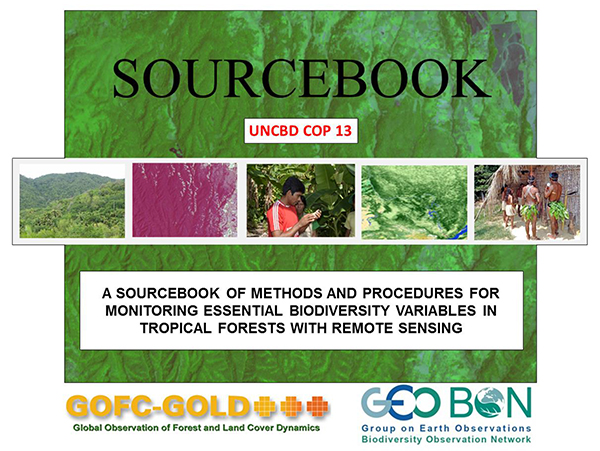Past decades have seen a growing demand for biodiversity data to inform development decisions at the local to national scale for underpinning global and sub-global assessments (e.g. United Nations Convention on Biological Diversity (UN CBD), and National Biodiversity Strategies and Action Plans (NBSAP).
The Essential Biodiversity Variables (EBV) concept proposed by the GEO BON, Space Agencies, and the Earth Observation research community at large aims to support efforts for biodiversity monitoring. However, there is a lack of information and consensus on the standardised and harmonised biodiversity data and monitoring methods that are required to assess how tropical forest biodiversity is evolving, and what the drivers of change are.
In this context GOFC-GOLD and GEO BON propose a new sourcebook. This joint effort based on a wide international group of forest researchers and Earth observation practitioners, aims to promote the best operational monitoring practices for the relevant EBVs based on scientific literature, and consensus.
Purpose: guide biodiversity monitoring in tropical forests using remote sensing to inform national and sub-national policy and decisions, convention commitments and targets.
Target Users: project managers, technical level practitioners in national, sub-national government agencies, academic institutions, NGOs, assuming audience has a background on remote sensing.
Focus: validated remote sensing techniques, integration of in situ and remote sensing observations, present sampling approaches, emerging technologies presented separately, list available Earth observation datasets, discuss synergies between biodiversity monitoring and REDD+ activities.
The biodiversity sourcebook is accessible for free on the GOFC-GOLD Land Cover Project Office website or download the biodiversity sourcebook directly here as PDF:
 |
A Sourcebook of Methods and Procedures for Monitoring EBVs in Tropical Forests with Remote SensingMarch 2017 |
